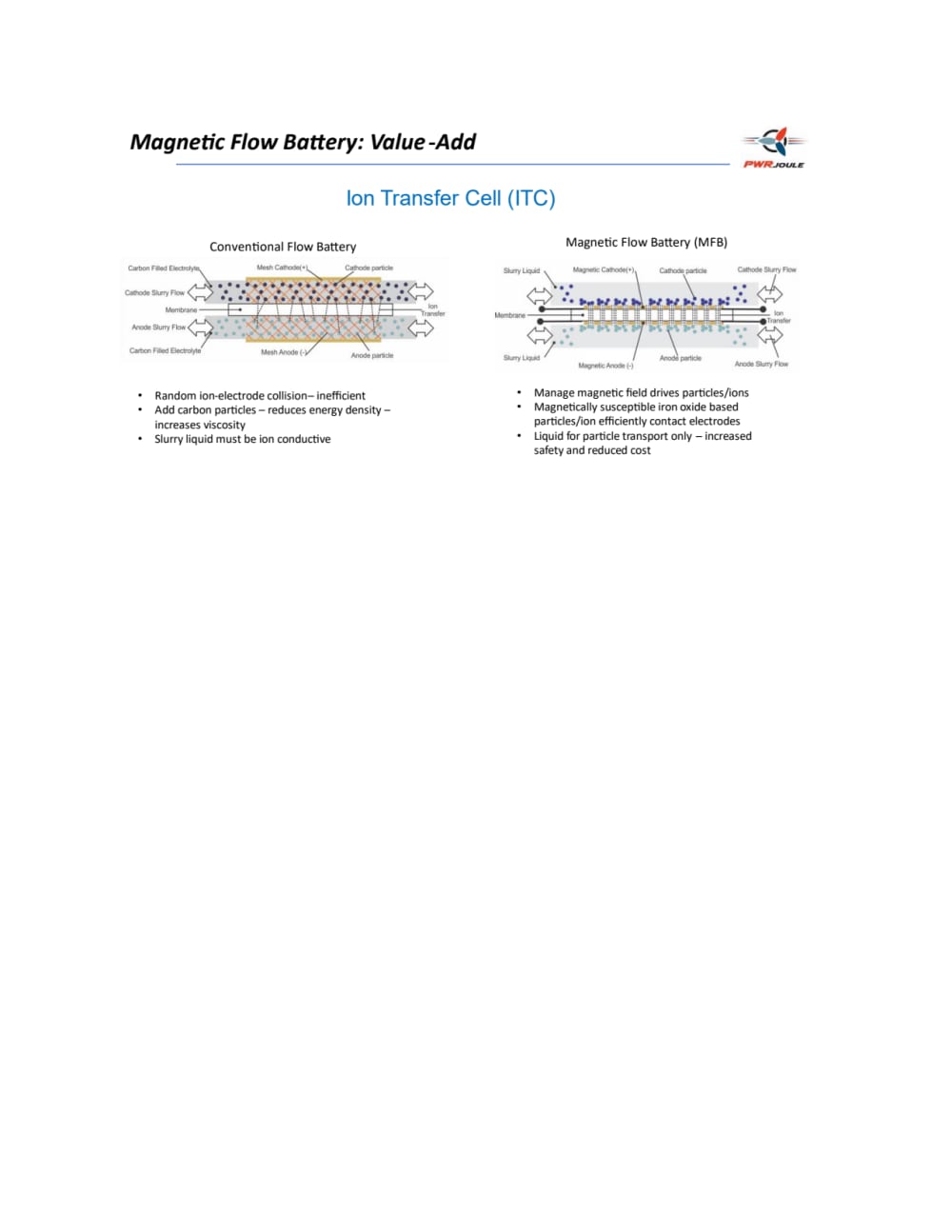
The PWRJoule business strategy is centered on the development and market introduction of Magnetic Flow Batteries (MFB) to address energy storage needs in the distributed energy resources, (DER) and transportation.
The MFB leverages iron-based electrochemical mixture, (ECM) and PWRJoule’s US patented technology exercising the magnetic properties of the ECM to achieve high charge density while increasing battery volume and weight energy density, as well as improved safety, sourcing and recyclability. The battery ECM utilizes two different electrolytes flowing on either side of a membrane/anode/cathode separator where ion transfer and electrical current flow are present. The PWRJoule concept eliminates several of the prominent disadvantages of typical Lithium-ion battery systems.
- The electrolyte slurries employ water and iron. These bulk materials can be easily be sourced anywhere in the world.
- The iron-based chemistry is inherently safe and non-toxic. The thermal runaway failure mode prevalent in Lithium-ion batteries is not present in the iron-based battery and thus risk from fire and/or environmental release of the slurry is greatly reduced or eliminated.
- The MFB eliminates the additives normally needed to increase the conductivity of the battery electrolytes (notably used by PWRJoule’s competitors). By exercising the magnetic properties of the ECM ions, the MFB system is also able to relocate the anode and cathode on the membrane separator to achieve higher current flow and energy dense packaging.
- The MFB is compatible with both Intercalation (Lithium-Ion) and redox (Iron) chemistries.
- The MFB has higher energy density than conventional, large Lithium-Ion energy stores, as well as conventional all-iron energy stores.
- MFB materials will use conventional recycling procedures.
- MFB systems have projected of 20+ life year expectancy and can be assembled with virtually no mechanical parts
PWRJoule’s initial market applications are targeted at large scale, utility level applications. The nature of flow batteries enables separation of the size constraints required for the depth of energy storage (total MW-hr or GW-hr of storage) versus similar constraints for the power rating of the battery power system (MW or GW of production). A sample layout for a 1 GW-10 hr energy storage is illustrated below. In this configuration, the depth of energy storage is determined by the size of the electrolyte slurry tanks and the power delivery (or power absorption) capability is determined by the size of the Magnetic Ion Transfer system.
Video
-
Awards
-
 2024 Top 100 Entries
2024 Top 100 Entries
Like this entry?
-
About the Entrant
- Name:Bret Raymis
- Type of entry:teamTeam members:
- William Nunnally








